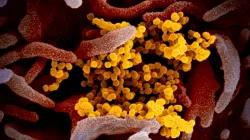Human metapneumovirus: Mysterious virus grips China, kids and elderly remain major targets
A mysterious virus, HMPV, has grappled China after five years of Covid-19 outbreak. The authorities have instructed people to wear masks and wash hands regularly.

After five years of the Covid-19 outbreak, several regions in China grapple with the spread of human metapneumovirus (HMPV). HMPV was discovered in 2001 by Dutch researchers, who were analysing samples of children suffering from respiratory infections. Authorities in China have instructed citizens to wear masks and wash hands regularly.
The surge in infections is followed by screening, detection, and isolation to deal with 'unknown' pathogens. The infection has already impacted several schools in China, however, the government says that there has been no detection of any unusual or novel pathogens so far.
Virus mainly impacts children, elderly
The virus is reported to cause upper and lower respiratory diseases in people of all ages, especially young children and elderly population. It generally spreads in droplets- either by coughing or sneezing. The transmission of the virus is also possible due to close contact with the infected people and even through exposure to contaminated environments.
According to the US Centers for Disease Control and Prevention, the symptoms of the HMPV virus are similar to those of other viral symptoms that are common during the winter season.
Is HMPV an RNA virus?
China's CDC website claims that the human metapneumovirus is an RNA virus, which belongs to the Pneumoviridae, Metapneumovirus genus. According to some studies, the virus has continued to exist for the last six decades, and it has spread as a common pathogen all over the world.
A report published in the Lancet Global Health in 2021 quoted data suggesting that HMPV was responsible for the death of almost 1 per cent of children under five, who had acute lowest respiratory issue. Notably, there is no vaccine for HPMV.
Also Read | What is the Bleeding Eye Virus? Know how it spreads, symptoms and treatment